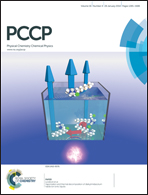Evidence of phase transition in Nd3+ doped phosphate glass determined by thermal lens spectrometry
Abstract
Thermal lens spectroscopy (TLS), differential scanning calorimetry (DSC) and Fourier transform infrared (FTIR) techniques were applied to the thermo-optical property analysis of a new phosphate glass matrix PANK with nominal composition 40P2O5·20Al2O3·35Na2O·5K2O (mol%), doped with different Nd3+ compositions. This glass system, synthesized by the fusion protocol, presents high transparency from UV to the near infrared, excellent thermo-optical properties at room temperature and high fluorescence quantum efficiency. Thermal lens phase shift parameters, thermal diffusivity and the DSC signal present pronounced changes at about 61 °C for the PANK glass system. This anomalous behavior was associated with a phase transition in the nanostructured glass materials. The FTIR signal confirms the presence of isolated PO4 tetrahedron groups connected to different cations in PANK glass. As a main result, our experimental data suggest that these tetrahedron groups present a structural phase transition, paraelectric–ferroelectric phase transition, similar to that in potassium dihydrogen phosphate, KH2PO4, nanocrystals and which TLS technique can be used as a sensitive method to investigate changes in the structural level of nanostructured materials.


 Please wait while we load your content...
Please wait while we load your content...